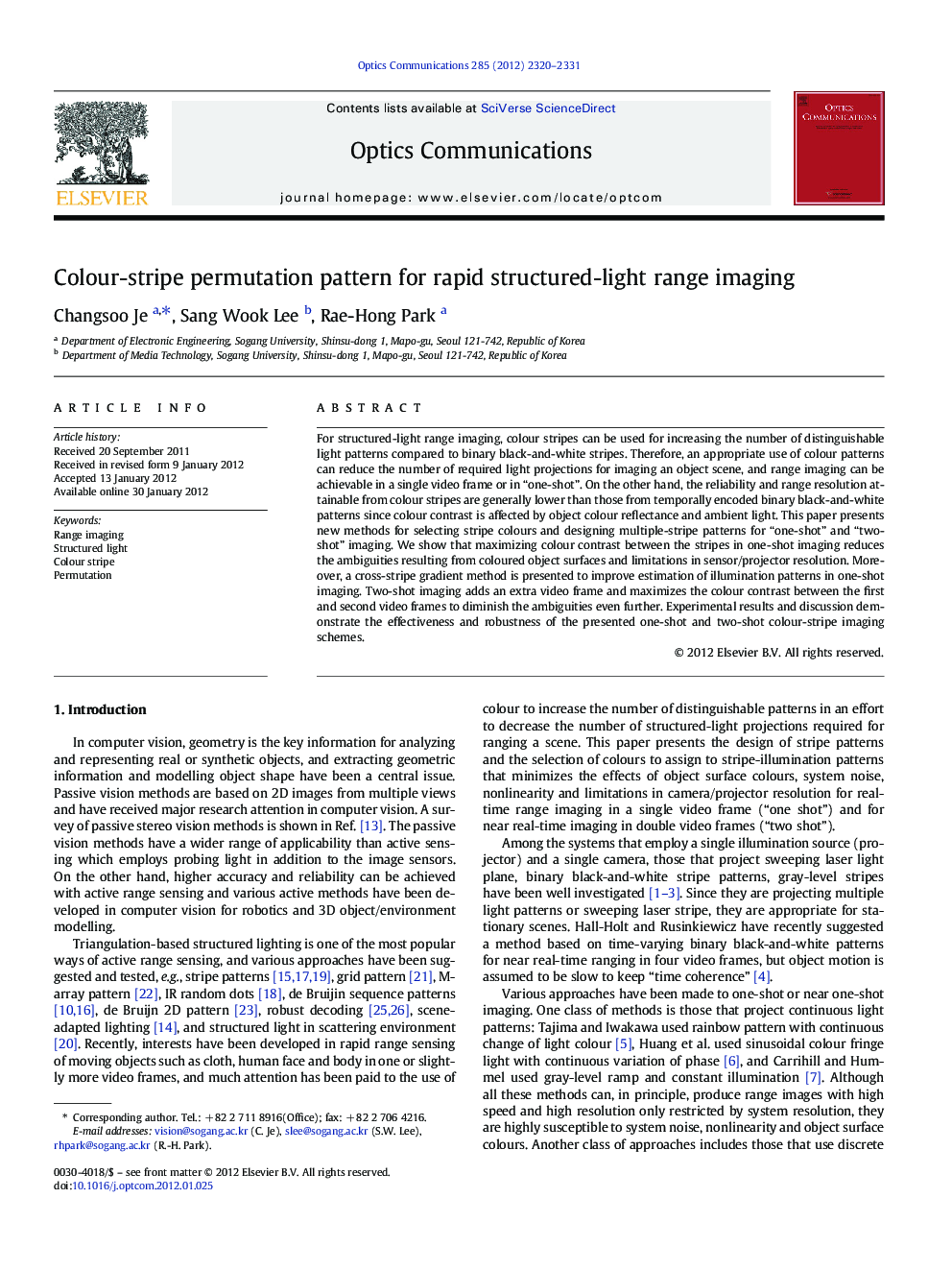| Article ID | Journal | Published Year | Pages | File Type |
|---|---|---|---|---|
| 1536556 | Optics Communications | 2012 | 12 Pages |
For structured-light range imaging, colour stripes can be used for increasing the number of distinguishable light patterns compared to binary black-and-white stripes. Therefore, an appropriate use of colour patterns can reduce the number of required light projections for imaging an object scene, and range imaging can be achievable in a single video frame or in “one-shot”. On the other hand, the reliability and range resolution attainable from colour stripes are generally lower than those from temporally encoded binary black-and-white patterns since colour contrast is affected by object colour reflectance and ambient light. This paper presents new methods for selecting stripe colours and designing multiple-stripe patterns for “one-shot” and “two-shot” imaging. We show that maximizing colour contrast between the stripes in one-shot imaging reduces the ambiguities resulting from coloured object surfaces and limitations in sensor/projector resolution. Moreover, a cross-stripe gradient method is presented to improve estimation of illumination patterns in one-shot imaging. Two-shot imaging adds an extra video frame and maximizes the colour contrast between the first and second video frames to diminish the ambiguities even further. Experimental results and discussion demonstrate the effectiveness and robustness of the presented one-shot and two-shot colour-stripe imaging schemes.
